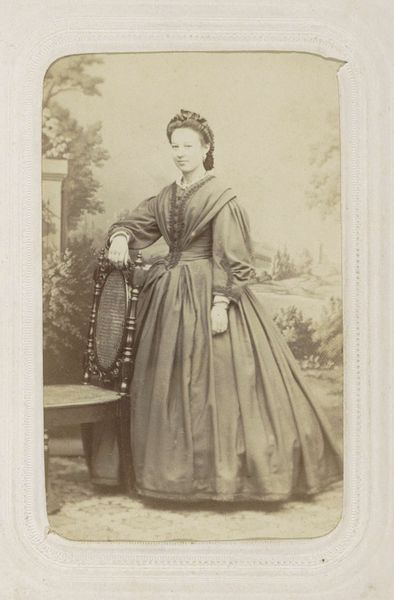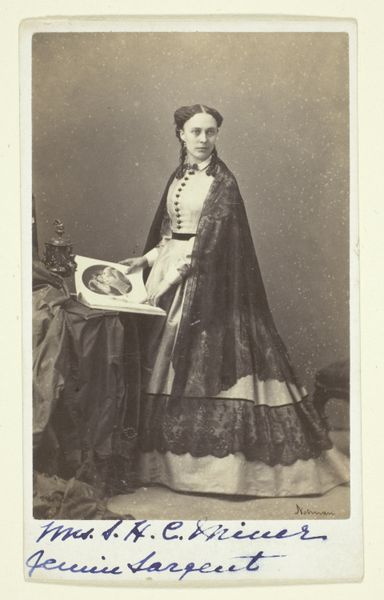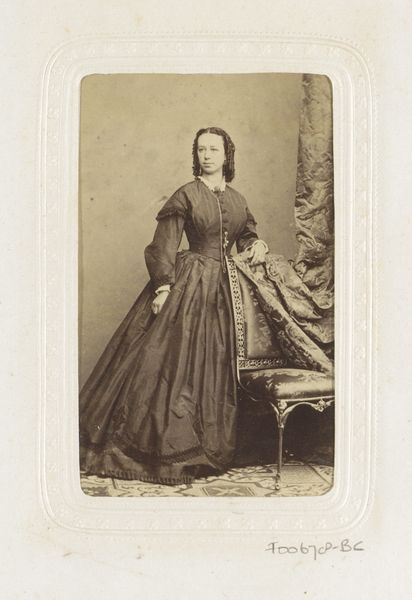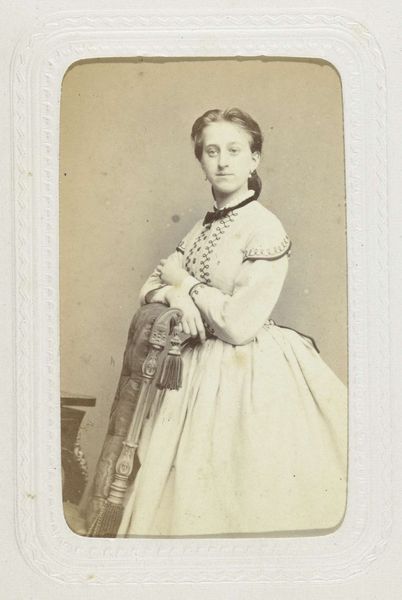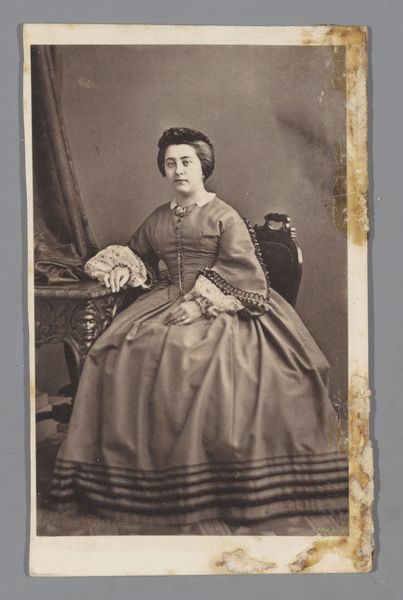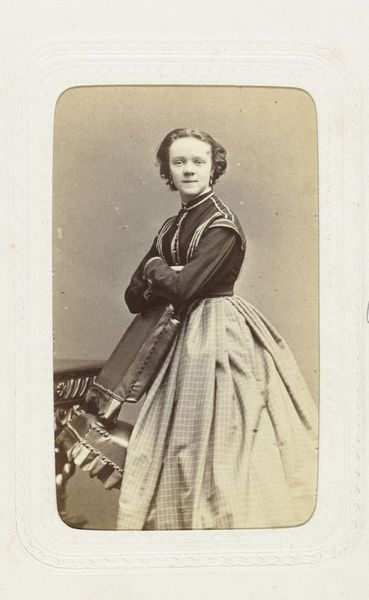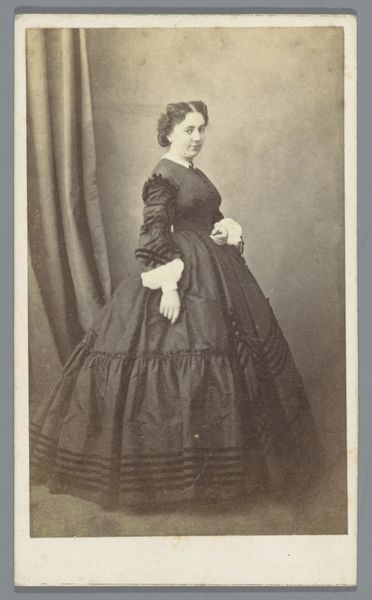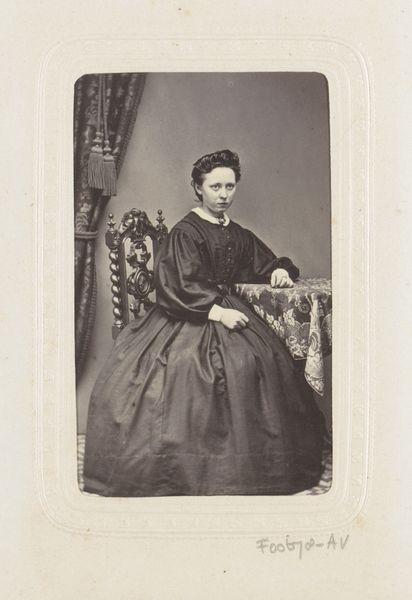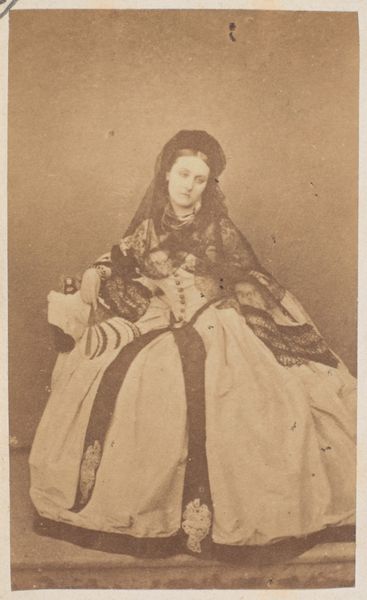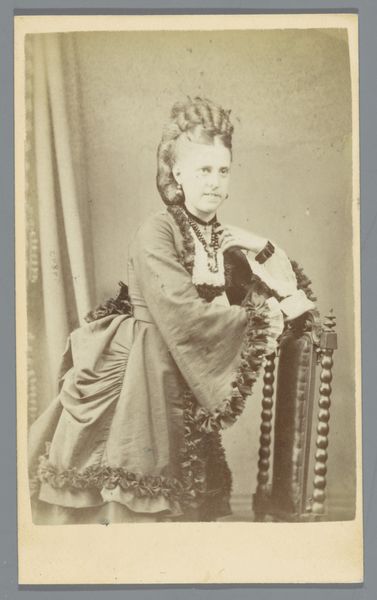
photography
#
portrait
#
photography
#
historical photography
#
19th century
Dimensions: height 85 mm, width 55 mm, height 104 mm, width 65 mm
Copyright: Rijks Museum: Open Domain
Editor: So, this is "Portret van de Comtesse d'Estreuve de Saint-Jean," taken sometime between 1860 and 1873 by Nadar. It’s a photograph, albumen print I believe, at the Rijksmuseum. She looks rather stoic and elegant. What strikes you about it? Curator: What interests me is the photograph’s status as a cultural artifact. Nadar was a prominent figure, using photography not just for documentation but also for shaping public perception. Think about it: this portrait presents the Comtesse not simply as an individual, but as a representation of her class. How does Nadar use the relatively new medium of photography to either reinforce or challenge existing social hierarchies? Editor: That's interesting. I hadn’t thought about it in terms of power dynamics. Curator: Consider the Comtesse's attire, her posture. These are carefully constructed elements. What do they tell us about the role of women in the mid-19th century and the image they were expected to project? Also, ponder on where such photography may have been seen – the accessibility and publicness it had, and therefore the dialogue with the public sphere. Editor: Right, it's more than just a pretty picture. It speaks to larger social roles. Were there specific conventions that photographers like Nadar had to adhere to when portraying members of the aristocracy? Curator: Absolutely. Think of painting traditions and how those aesthetics translated to photography. The lighting, composition, even the subject’s expression were all carefully managed to convey status and respectability. By understanding these conventions, we can better interpret the subtle ways in which Nadar might have been either reinforcing or subtly subverting them. How might it compare to painted portraits, do you think? Editor: This has been so insightful, I now have a whole new perspective of the image. Curator: Indeed! Reflecting on the photograph through this lens lets us appreciate the ways photography became interwoven with the evolving cultural and political landscape.
Comments
No comments
Be the first to comment and join the conversation on the ultimate creative platform.
